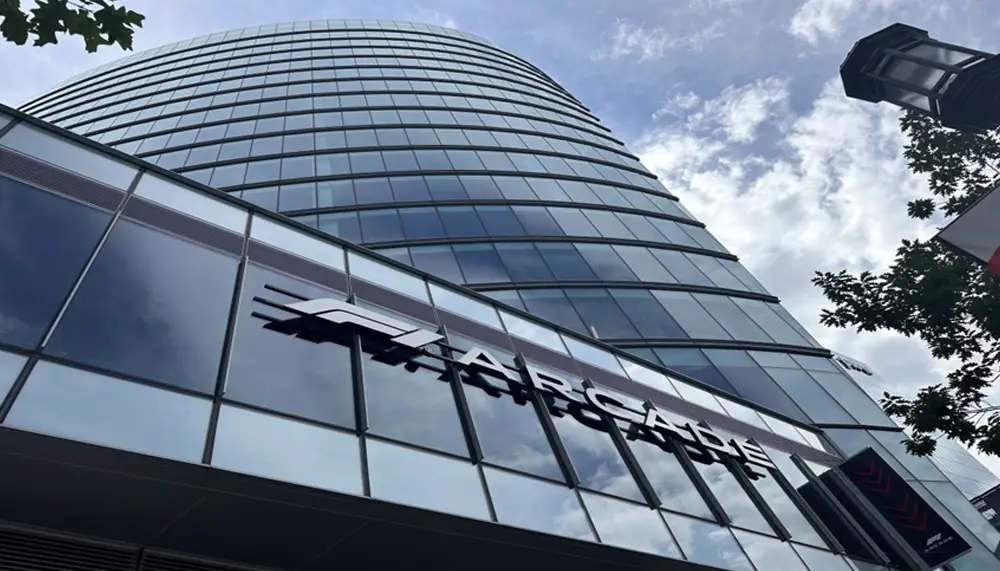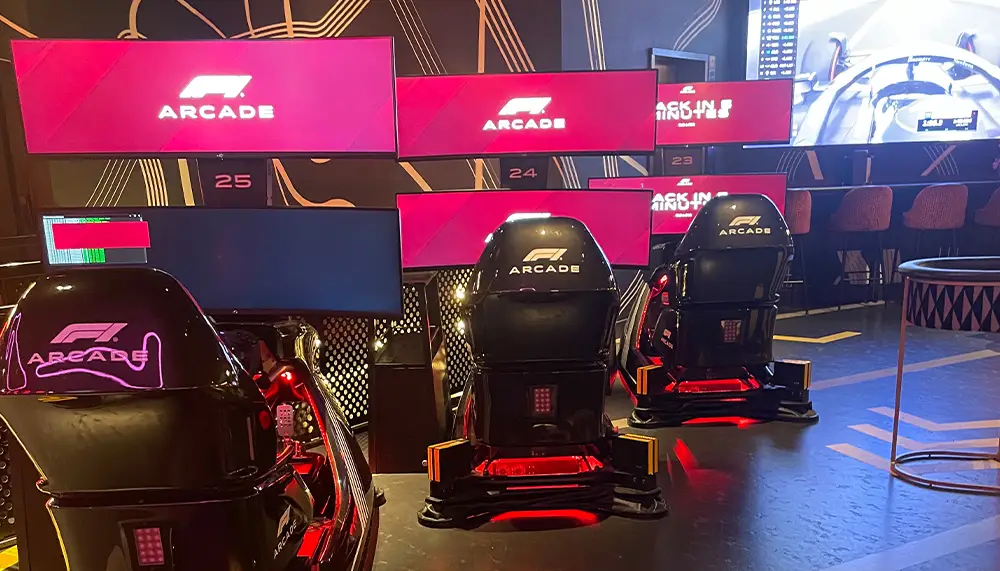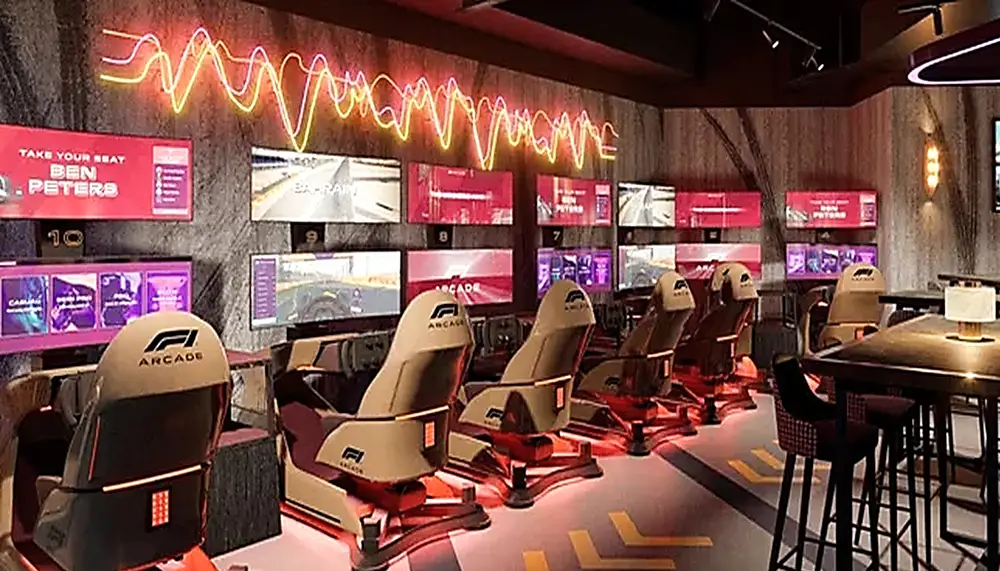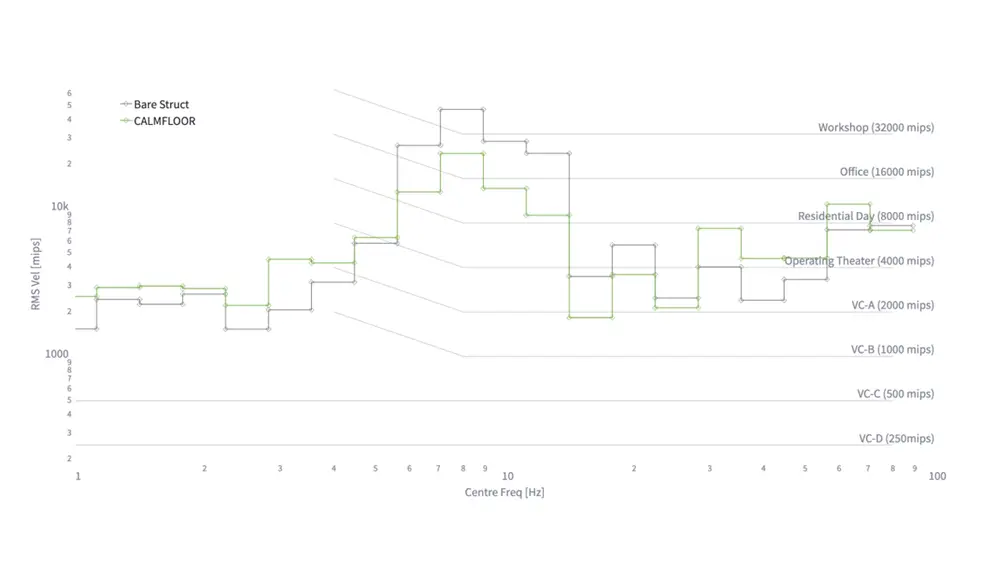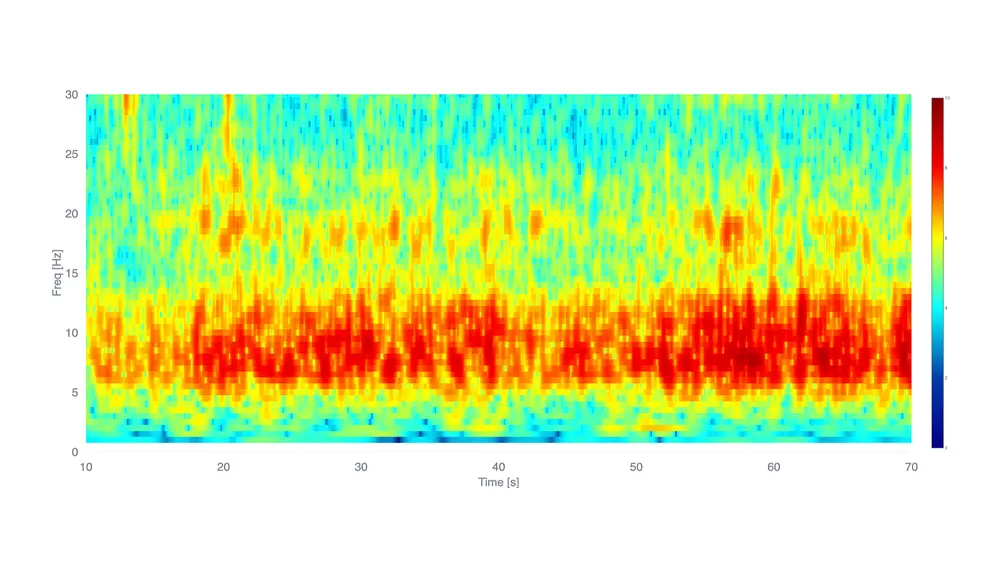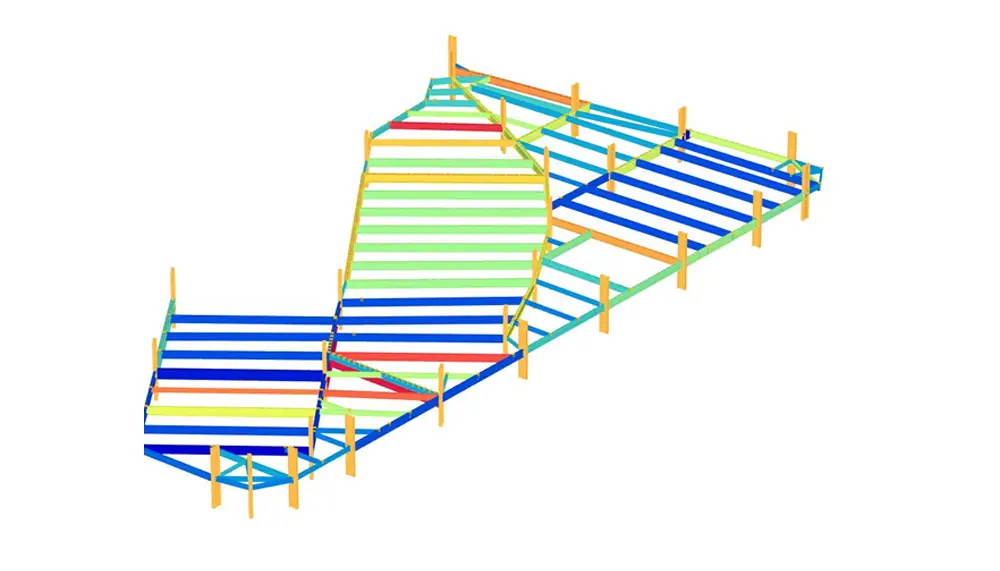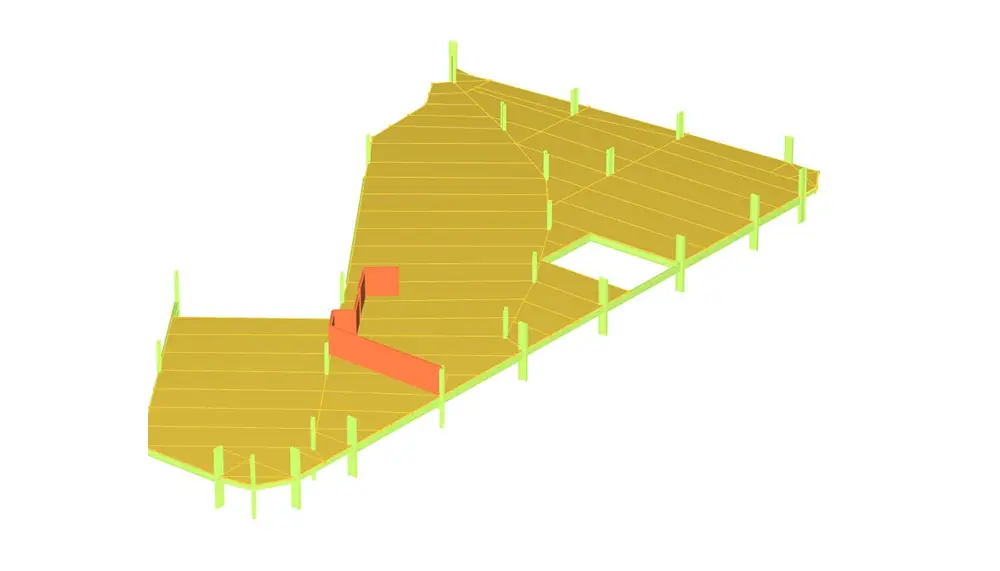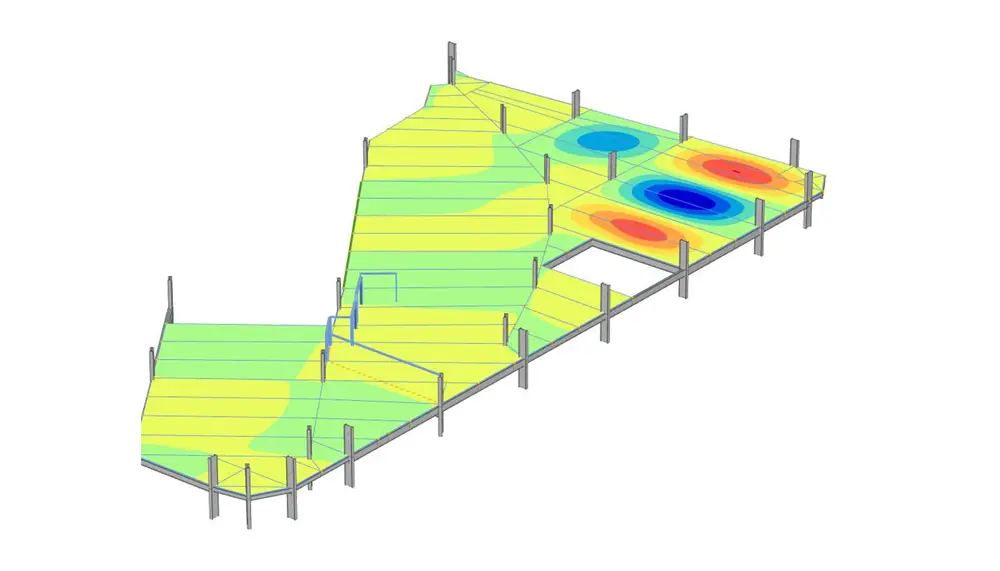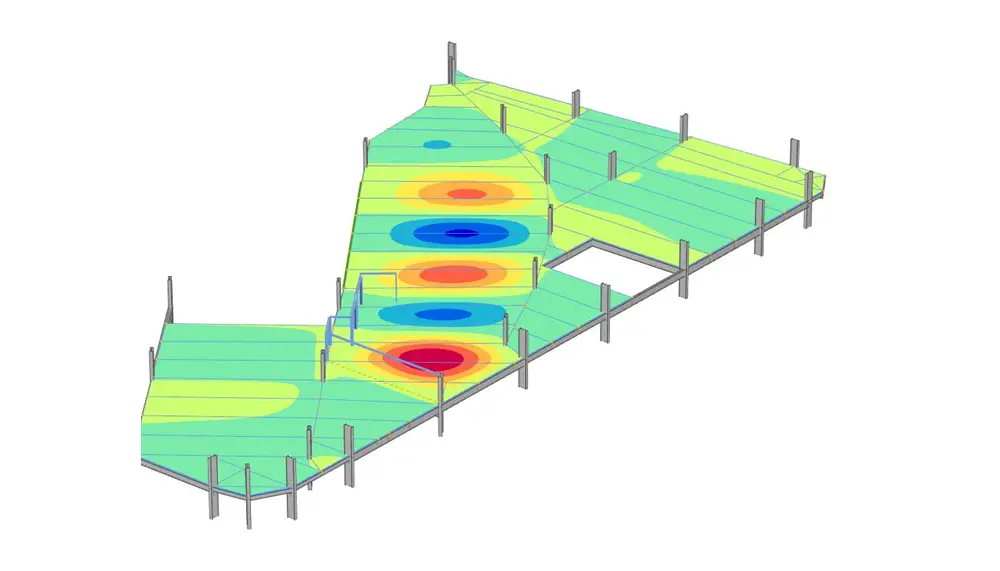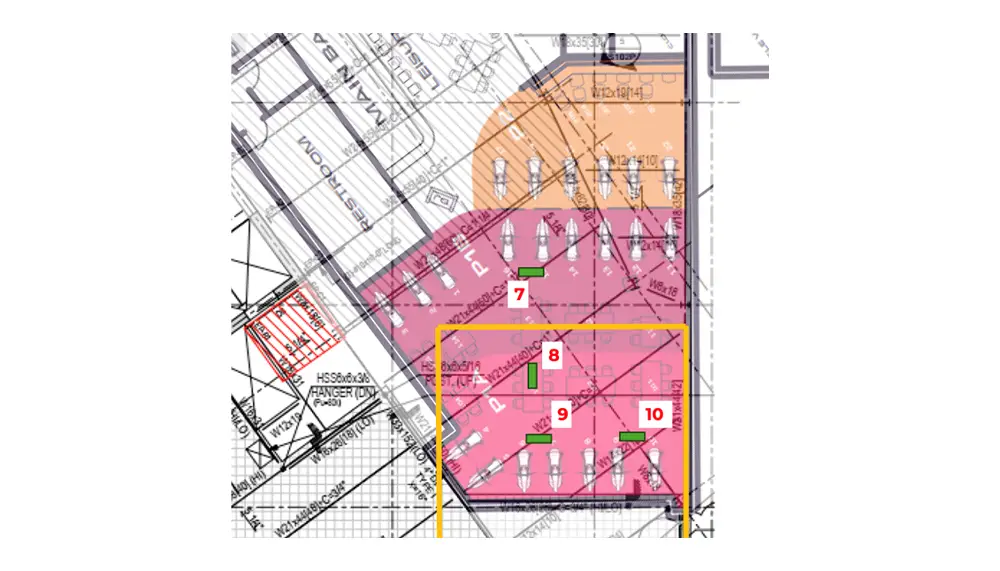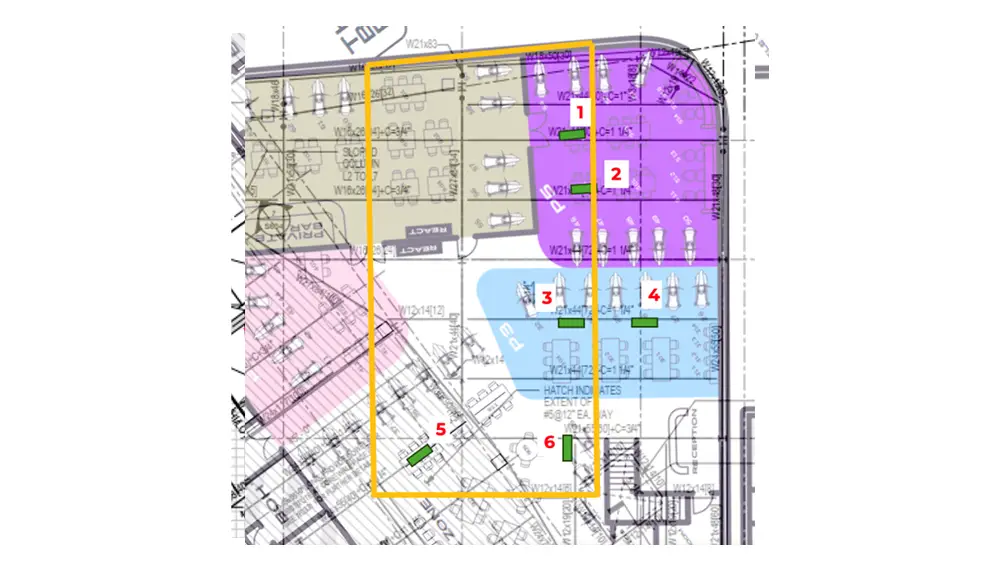The challenge
The challenge was to bring F1 Arcade’s excessive vibration to within levels deemed acceptable by the building’s owner – without structural intervention, downtime or disruption to F1 Arcade operations. Crucially, the solution had to be tested, proven and commissioned within an exceptionally short timeframe.
Within one week, our UK Technical team flew to the US for an urgent site visit to measure, demonstrate and test the effectiveness of CALMFLOOR active mass damper (AMD) technology.
Close collaboration with F1 Arcade’s vibration consultant and the building owner’s structural engineering team (McNamara Salvia) and their acoustic engineers (Acentech) was critical. All elements of the test phase had to be meticulously monitored and validated. We were also required to work alongside other third-party contractors to ensure the proposed installation of CALMFLOOR AMDs would be concluded seamlessly.
For the test, we placed a single CALMFLOOR unit on the structural slab, but not rigidly connected to the structure itself. In initial tests, reductions of over 50% were achieved over a broad frequency range, illustrated by the 1/3 octave plot (see image 5 above). The more detailed spectrogram plot analysis shows energy at multiple frequencies within this region (see image 5 above).
Our tests demonstrated that CALMFLOOR AMDs would be effective at reducing vibration across this frequency range and, by distributing multiple units to each hotspot and connecting each AMD rigidly to the structure, peak performance would certainly be achieved.


